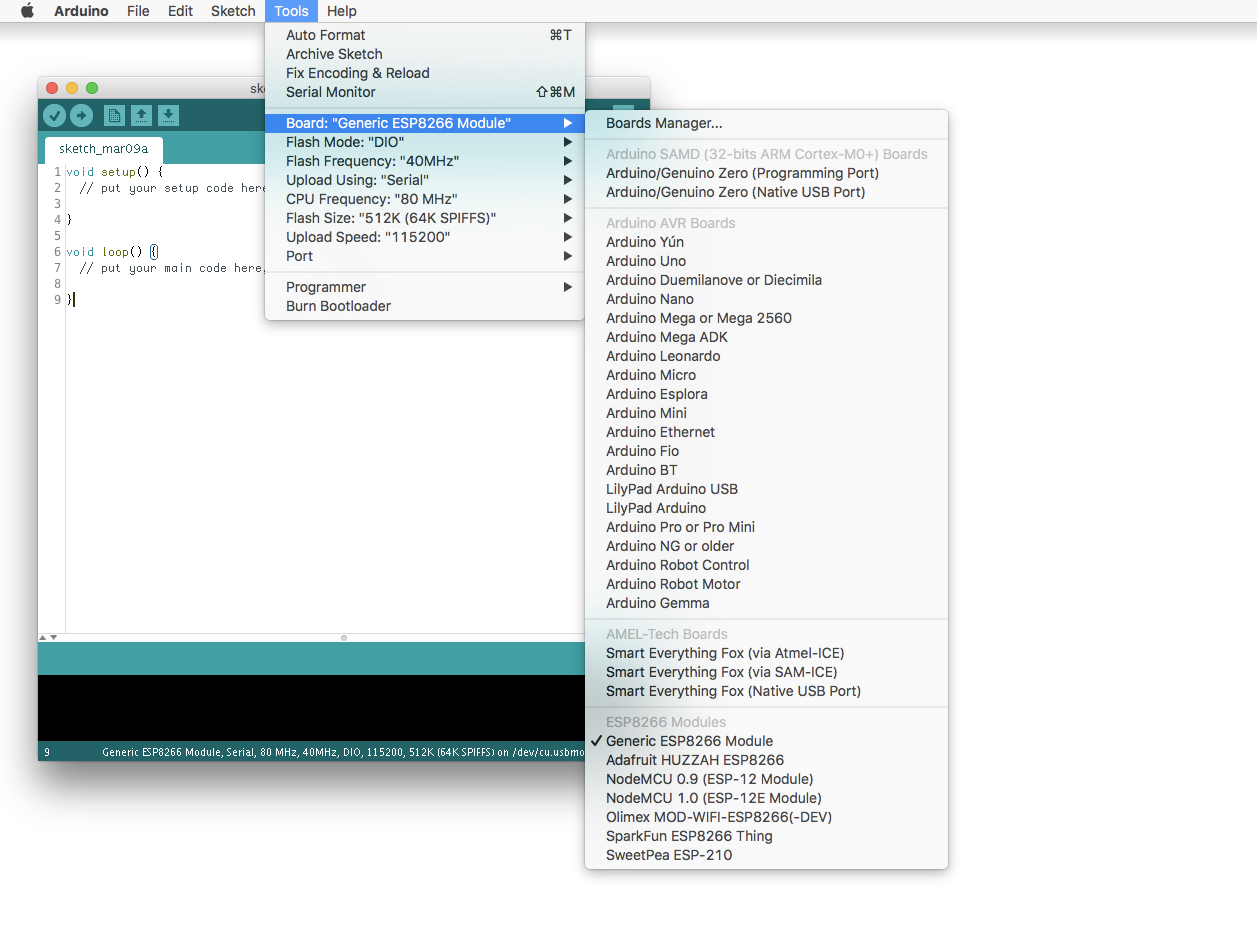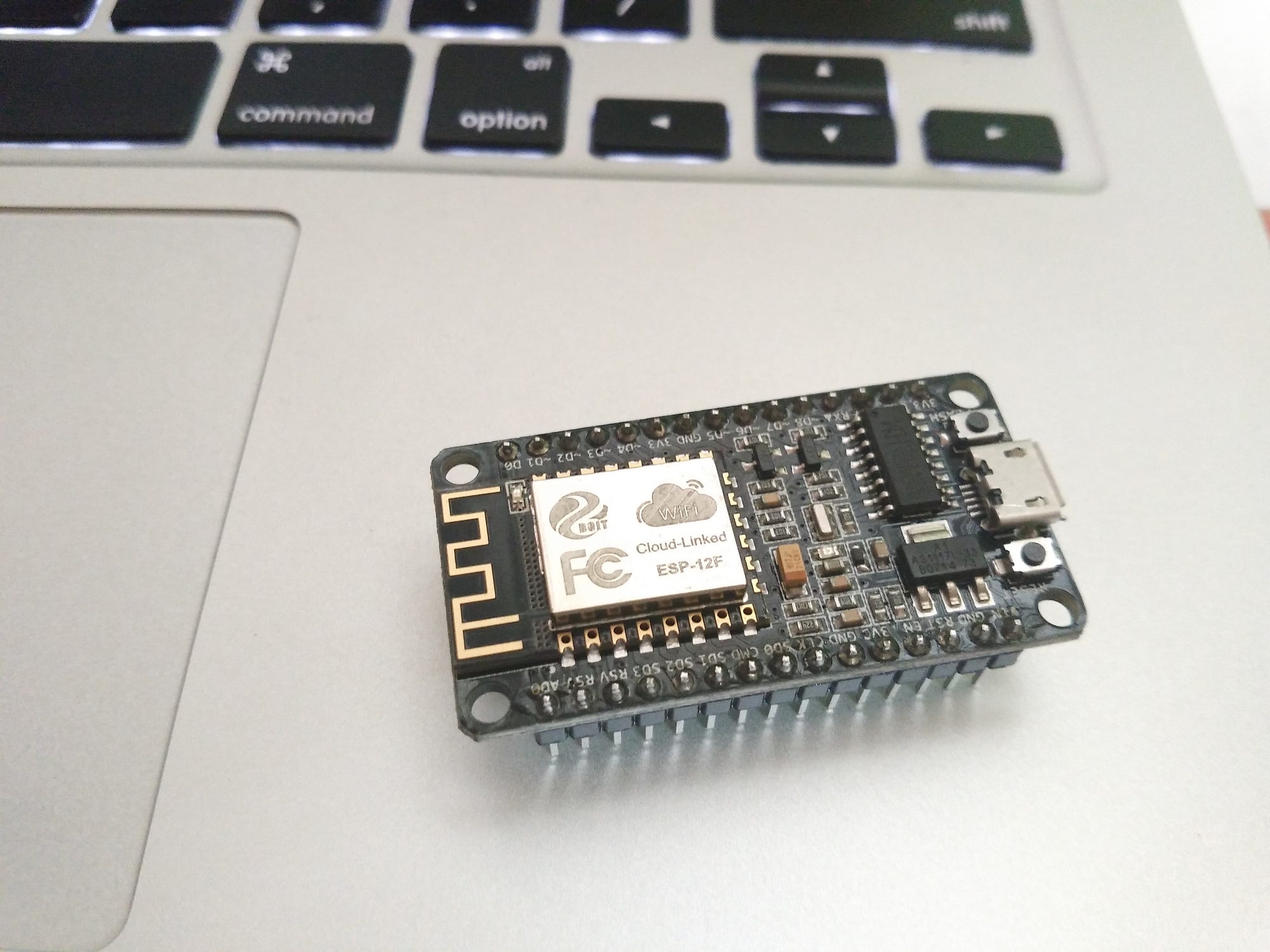Install drivers for USB-to-Serial. A prerequisite to program ESP.-based modules usually is to establish a communications channel from your development platform (PC, Mac, Linux) to the device over USB. This in turn requires your system to detect the USB-to-Serial (aka USB-to-TTL, aka USB-to-UART) adapter on the ESP8266 or ESP32 module. Esptool.py is a python script that retrieves information about your ESP8266 module and flashes its firmware. In the previous article we used ESPFlasher to install a NodeMCU firmware on an ESP8266-based board (and even install a custom firmware through nodemcu-build), but ESPFlasher is only available for Windows (32 or 64 Bits) while esptool can run on all platforms that can run Python. I can see hello world on serial monitor. But on my Mac, I can see garbage only. I tried some serial monitors, Arduino IDE and platform io ide but still same. Are there any solution about this problem? EDIT: I fixed issue last night. Catalina has ch340 drivers already and I setup oem driver from GitHub. Apples driver and oem drivers conflicting.
A few days ago a package arrived from SeeedStudio: the new NodeMCU board V1.0 (see picture)| The NodeMCU V1.0 (picture from here) |
WIFI Kit 32, WIFI LoRa 32, Wireless Stick, Wireless Stick Lite, Wireless Shell — — Based on ESP32 chips, The underlying driver and compilation environment for ESP32 is required; WIFI Kit 8 — — Based on ESP8266 chips, The underlying driver and compilation environment for ESP8266 is required. If you notice in the ESP8266 Firmware Flash Tool, the moment you click on START, you will get two MAC Address as AP and STA and also information about the Module in the DETECTED INFO section. If everything goes well, the ESP8266 Module must be updated with new firmware.

On paper it has some nice advantages compared to the old V0.9 version or also to other ESP8266 dev boards: you can directly connect it to your computer for programming and you won’t need an additional USB-to-Serial programmer or an external power supply. The USB connector does the job. The only problem: they must have changed something on the interface. Flashing doesn’t work out of the box anymore:
I’m programming on a Mac, so all the fancy Windows based flashing tools won’t work for me directly. I usually use the adapted Arduino IDE or the esptool.py to upload new images to the device. This posts describes how you can flash the new hardware despite the problems with the esptool. Basically it shows how you can use the original Windows tool from Espressif from your Mac OS X system, even if it is made for Windows.
- Download and install driver for the CP2102 from here: https://www.silabs.com/Support%20Documents/Software/Mac_OSX_VCP_Driver.zip
- If you don’t already have it install homebrew: http://brew.sh/
- Install wine:
I had to work around some issues with brew and wine. Write a comment if you want to know how I resolved them…
- Download the latest Flashing tool from Espressif:
http://bbs.espressif.com/viewtopic.php?f=5&t=433 - Install unrar (if you don’t already have it):
- Unpack the flash tool:
- Install unrar (if you don’t already have it):
- Enter the directory and start the Flashing Tool:
- Now that the wine directory has created enter the dosdevices folder and create a symlink to your NodeMCUs tty device:
- Select your image and adjust the settings according to this screenshot:
ESP Flash Tool started from wine: adjust the settings accordingly - Now connect the NodeMCU module using USB and press the RST button while you keep pressing the FLASH button. This will put the module into the right state for flashing
- Now click START in the flasher tool and wait until it is finished. Click RST again and have fun.
Esp8266 Mac Driver Update
I hope that the esptool gets fixed quickly to work with the new hardware. I’m also not sure whether the problems comes from the USB-to-Serial converter or rather from the ESP-12E module. I suspect it is the later, but I couldn’t find anyone complaining about problems with the ESP-12E in general.
Shopping Links:
- From SeeedStudio: http://www.seeedstudio.com/depot/NodeMCU-v2-Lua-based-ESP8266-development-kit-p-2415.html
- From AliExpress: Wireless module NodeMcu Lua Nodemcu WIFI Network Development Board Based ESP8266 FZ1390
Related posts:
- WIFI Kit 32, WIFI LoRa 32, Wireless Stick, Wireless Stick Lite, Wireless Shell — — Based on ESP32 chips, The underlying driver and compilation environment for ESP32 is required
- WIFI Kit 8 — — Based on ESP8266 chips, The underlying driver and compilation environment for ESP8266 is required
- ESP32 development framework install: https://heltec-automation-docs.readthedocs.io/en/latest/esp32/quick_start.html
- ESP8266 development framework install: https://heltec-automation-docs.readthedocs.io/en/latest/esp8266+arduino/quick_start.html
1. Install Heltec ESP(ESP32 and ESP8266) development framework:


Esp8266 Arduino Mac Driver
- GitHub repository: https://github.com/Heltec-Aaron-Lee/WiFi_Kit_series
Please refer to the README.md document to clone and install. This project must in ” *:DocumentsArduinohardware ” path.
2. Install Arduino library
- Install Heltec ESP32 Arduino library: https://github.com/HelTecAutomation/Heltec_ESP32
- Install Heltec ESP8266 Arduino library: https://github.com/HelTecAutomation/Heltec_ESP8266
Esp8266 Mac Driver
Please refer to the README.md document to clone and install. Arduino library must in ” *:DocumentsArduinolibraries ” path.